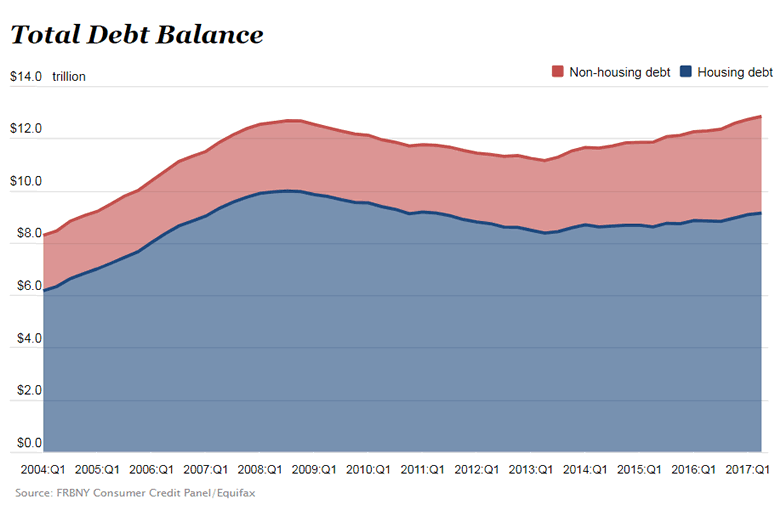
|
Household Debt Reaches Record High Household debt jumped $114 billion over the second quarter of the year, according to the Household Debt and Credit Report released by the New York Federal Reserve’s Center for Microeconomic Data on Wednesday. Total household debt across the nation clocked in at $12.84 trillion at the close of the quarter—nearly a full percent higher than Q1. The nation’s total household debt is now $164 billion higher than its peak, reach in Q3 2008. It’s more than 15 percent higher than the nation’s trough, seen in early 2013. Total mortgage debts rose 0.7 percent for the quarter, while home equity lines of credit (HELOCs) fell 0.9 percent. The total national mortgage debt now sits at $8.69 trillion—up $64 billion since the start of the year. Debt from HELOCs stands at $452 billion. Auto and credit card debts both increased for the quarter, ticking up 2 percent ($23 billion) and 2.6 percent ($20 billion), respectively. The total amount of student loan debt stayed the same. Delinquencies on credit card balances—both early-stage and 90 days-plus—rose for the third quarter in a row. A similar upward trend hasn’t happened since 2009. According to Donghoon Lee, Research Officer at the New York Fed, today’s debt levels should raise any red flags—at least not yet. “Almost nine years later, household debt has finally exceeded its 2008 peak, but the debt and its borrowers look quite different today,” Lee said. “This record debt level is neither a reason to celebrate nor a cause for alarm. But it does provide an opportune moment to consider debt performance. While most delinquency flows have improved markedly since the Great Recession and remain low overall, there are divergent trends among debt types. Auto loan and credit card delinquency flows are now trending upwards, and those for student loans remain stubbornly high.”
|
| © 2006 - 2022. All Rights Reserved. |
